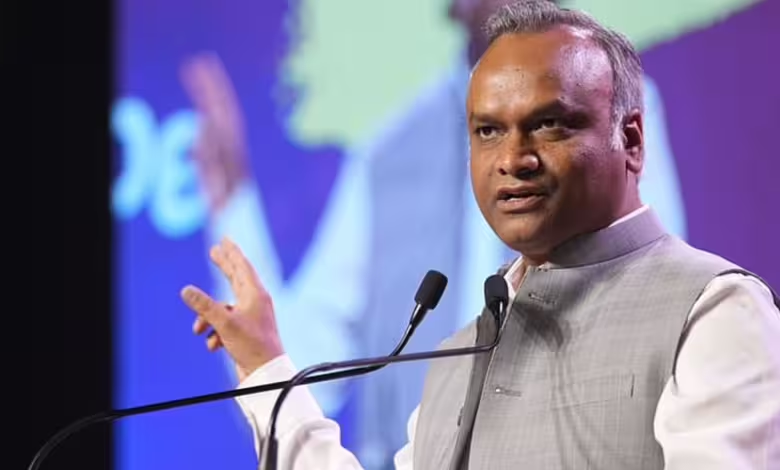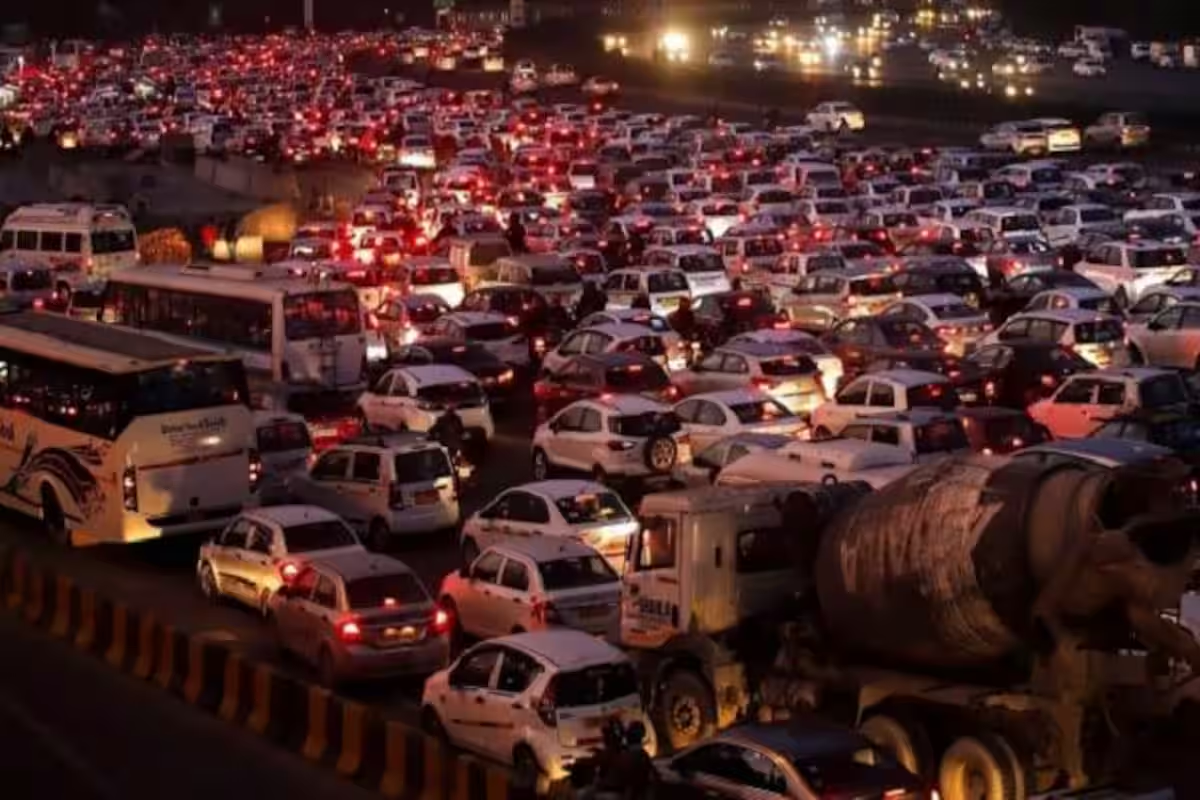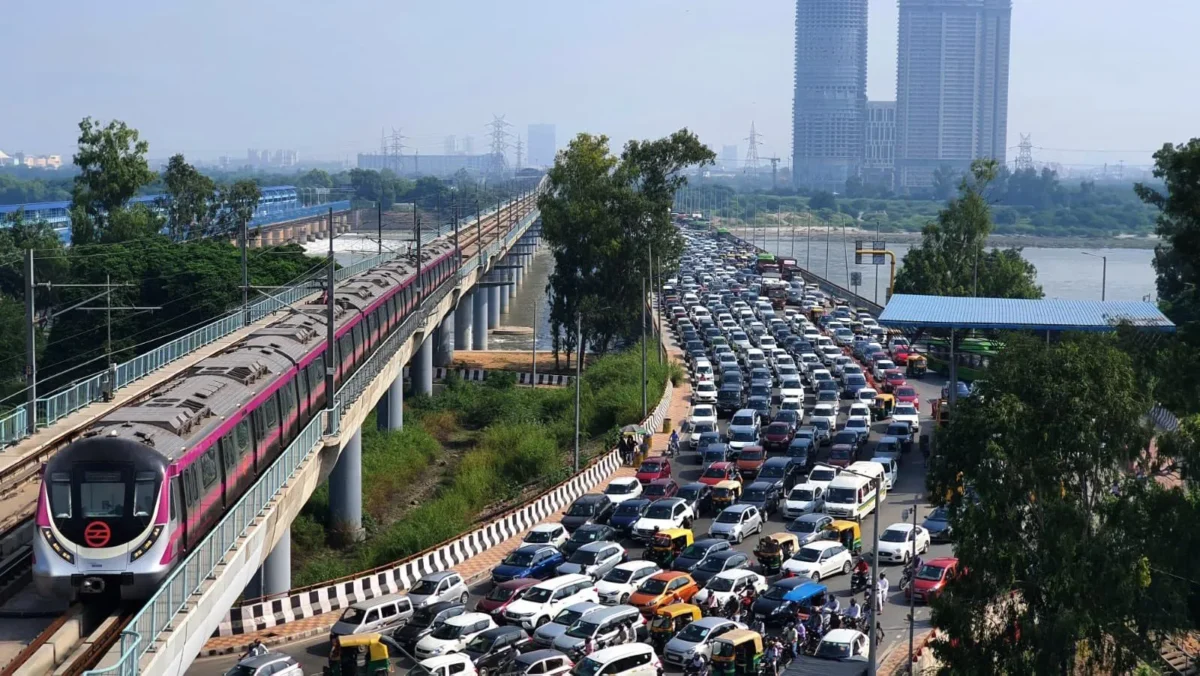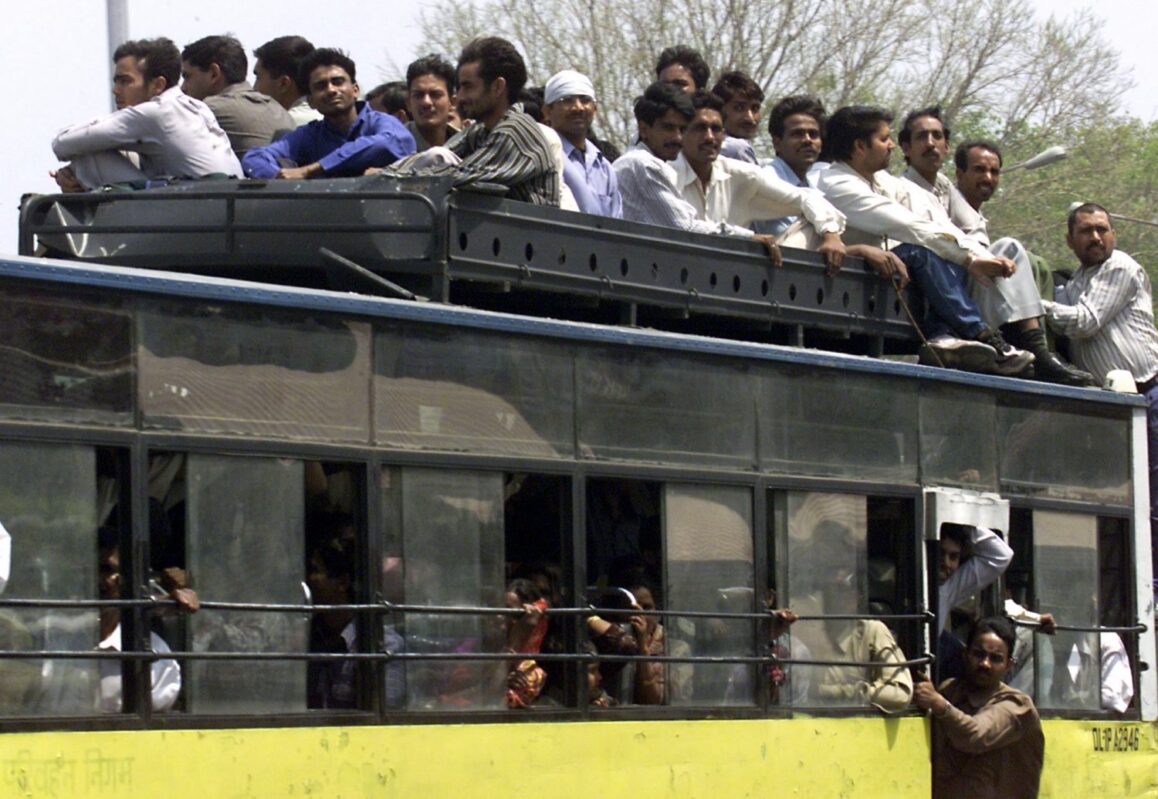Traffic Is Causing Bengaluru Rs 20,000Cr Every Year!
Speaking at an event, Priyank Kharge said that due to traffic jams, Bengaluru is losing a lot of money.

Bengaluru-the Silicon Valley of India-is fighting an expensive headache. Karnataka’s IT Minister Priyank Kharge publicised a mind-boggling statistic: Bengaluru is losing around Rs 20,000 crore, approximately $2.4 billion, every year to congestion on roads. It is this very heady cocktail of Bengaluru’s often-iconic growth pace and technological prominence which seems to have created a traffic problem of this order.
The launch of the Traffic Quality Index(TQI) by employee commute platform MoveInSync Bengaluru will go a long way in quantifying and addressing the headache. This AI-powered dashboard will deliver scores about the intensity of the problem in specific areas or across whole cities. It will leverage data from 15 years to improve decongestion efforts and make commuting safer, thus unlocking business growth potential and improving the livability of cities.
The TQI has a lot of applicability. Individual commuters will be able to plan better for their travels in the same way people check on their weather apps before going out. Organizations will make optimum decisions about when to have shifts or offices to avoid contributing to peak hour congestion. Quite crucially, the information could be used by government bodies to determine what bottlenecks existed in the infrastructure and which suggested improvements worked as expected in the implemented traffic management policies.
 However, the TQI is only half the story. The traffic congestion in Bengaluru is symptomatic of a far more systemic problem in the urban planning of India’s high-growth cities. Simply put, Bengaluru’s road infrastructure could not keep pace with the explosive population and economic growth occurring in the city itself. As offices of multinational companies popped up across Bengaluru’s high-tech ghettos, the number of automobiles driven by workers soared, further stressing an already-stressed-overloaded roads.
However, the TQI is only half the story. The traffic congestion in Bengaluru is symptomatic of a far more systemic problem in the urban planning of India’s high-growth cities. Simply put, Bengaluru’s road infrastructure could not keep pace with the explosive population and economic growth occurring in the city itself. As offices of multinational companies popped up across Bengaluru’s high-tech ghettos, the number of automobiles driven by workers soared, further stressing an already-stressed-overloaded roads.
The economic implications spill far beyond the giant figure of Rs 20,000 crore. Time lost due to productivity is compounded by extra fuel consumption and heightened stress levels for those commuting. Growth opportunities for start-ups as well as established companies are affected by the simple fact of getting staff to and from work.
All around suasion is needed to cure the Bengaluru traffic crisis.Technological solutions like TQI are certainly insightful, but these need to be followed by the concrete investments in public transport infrastructure and smarter urban planning and policies for alternative modes of transport. The extension plans of the metro in this city is comforting to hear. It will, however, reflect only when it comes packed with seamless last-mile connectivity along with a good bus network.
Traffic Troubles Beyond Bengaluru –
While traffic troubles grab headlines from Bengaluru, it is by no means an isolated case. The roll-out of TQI across Mumbai, the NCR, Hyderabad, and Chennai put this particular pan India urban challenge in perspective. Each metropolitan has its peculiar problems facing it within the space of traffic – influenced by local geographies, historical patterns of development, and economic drivers.
On average, road congestion during peak hours in the Indian cities studied was 149%, significantly higher than in comparable metropolitan areas across Southeast and East Asia. This indicates that Indian commuters take 1.5 times longer to cover a given distance during peak hours compared to non-peak hours.
India’s financial capital is fettered under the fetters of island geography and a heritage of north-south commuting patterns. The city’s lifeline, its suburban rail network, carries millions of people daily but can’t keep up with the ever-widening urban sprawl. Roads are congested with a combination of private vehicles, taxis, and the iconic BEST buses that create a daily test for patience. While Nitin Dossa of the Western India Automobile Association is quoted as saying that 400 more new cars are hitting Mumbai roads every day, the impression is of a city hurtling headlong into lock-up.
 The capital and its vast NCR regions have a different headache altogether. Carefully planned broad avenues of Delhi are getting congested by sheer volumes of traffic from its satellite cities. The notorious 100km 2010 Beijing traffic jam is the precursor to what Delhi experiences. Although the Delhi Metro has eased some burden, the challenges of last-mile connectivity and the lure of private automobiles continue to accumulate on roads .Hyderabad and Chennai, two of India’s most critical IT and manufacturing hubs, are also experiencing similar growing pains in the face of Bengaluru.
The capital and its vast NCR regions have a different headache altogether. Carefully planned broad avenues of Delhi are getting congested by sheer volumes of traffic from its satellite cities. The notorious 100km 2010 Beijing traffic jam is the precursor to what Delhi experiences. Although the Delhi Metro has eased some burden, the challenges of last-mile connectivity and the lure of private automobiles continue to accumulate on roads .Hyderabad and Chennai, two of India’s most critical IT and manufacturing hubs, are also experiencing similar growing pains in the face of Bengaluru.
Economic growth has blossomed into booming vehicle markets and a strain on existing infrastructure. In Chennai, ironic growth in the automobile industry meant the creation of the very problem it was supposed to solve: traffic congestion.
The economic impact of traffic congestion across these cities is monumental. A Transport Corporation of India and IIM Calcutta study in 2012 estimated losses of approximately Rs 60,000 crore every year, then in 2018 a Boston Consulting Group study estimated this loss to be at Rs 1.44 lakh crore, due to highway traffic delays on high volume highways alone. This figure is more than a decade old and, in the face of increasing growth in urban centers and the population of vehicles, this estimate is probably rather modest.
Additionally, the cost of congestion doesn’t end with purely economic losses. There are also human costs by virtue of stress, poor quality of life, and health attributed to a surfeit of vehicular pollution, wherein no price is put. Delhi, where, time and again, air quality touches hazardous levels, is a city in a state of crisis with its public health worsening significantly due to traffic-induced pollution.
The similarities in traffic challenges across these diversified cities indicate a systemic issue in the way India approaches urban development and transportation planning. While each city will have its customized solutions to these issues, there does exist a requirement for a national-level strategy when it comes to urban mobility and sustainable development.
What causes such traffic jams daily?
The issue of traffic jams has its multifaceted root causes chained together with rapid urbanization, economic growth, inadequate public transportation, and cultural affinity for personal vehicle ownership. To take the effective approach, we first need to understand the origin of this problem –
Rapid Urbanization and Population Growth: The rate at which Indian cities are urbanizing is unprecedented; at times, faster than the infrastructure development, thus leading to unplanned growth and straining the already thinning rod networks.
Rising Income Growth and Vehicle Ownership: As income expands, more Indians can afford personal vehicles, which carry status along with necessity, considering the failure in public transport.
Inefficient Urban Planning: Ineffective historical development patterns and lack of integrated land-use and transportation planning have created inefficient urban structures that exacerbate traffic congestion. Further poorly planned intersections, inadequate parking facilities, and inadequate road maintenance create traffic choke points.
 Behavioral Parameters: The trend for door-to-door transport and resistance to carpooling or public transit usage adds to the congestion. People in India are divided by social class and more often than not, people belonging to a better class do not wish to use public transport, where they will have to travel with others, who might belong to a lower class.
Behavioral Parameters: The trend for door-to-door transport and resistance to carpooling or public transit usage adds to the congestion. People in India are divided by social class and more often than not, people belonging to a better class do not wish to use public transport, where they will have to travel with others, who might belong to a lower class.
Now that we know Why the traffic congestion has become a problem around the world, let’s think of the possible solutions of these problems –
Invest in Public Transportation: Metro networks, buses, and last-mile connectivity need to be constructed in larger and improved numbers. Efficient public transportation is one thing that has clearly been affected in Delhi.
Embrace Smart City Technologies: Advanced real-time congestion monitoring and adaptive traffic signals make the traffic flow much more optimal. A variation of the implementation has been seen in Bengaluru’s TQI.
Alternative Transportation: Dedicated lanes and pedestrian-friendly infrastructure may promote walking and cycling encouraging short-distance trips by reducing the use of automobiles.
Congestion Pricing Charging the entry price to overcrowded areas at specific peak hours, much like Singapore’s Electronic Road Pricing, can discourage quite unnecessary trips.
Improved Urban Planning: Applications of principles such as transit-oriented development and encouraging mixed-use neighborhoods that can avoid long commutes will be able to decrease the necessity of traveling long distances.
Flexible work hours and working-from-home: The benefits can be better spread out throughout the day with staggered working hours and home-based work.
Smart Parking Management: Implementing intelligent parking solutions and rethinking parking rules to discourage long-term street parking in busy areas.
Road Infrastructure investment: Planned and strategic road development along with road upgradation, setting up flyovers and underpasses in key intersections.
Regulatory Measures: Implement stricter standards for emission, focus the promotion of electric vehicles, and in extreme situations also has the flexibility to limit the registration of new vehicles at particular places because of severe congestion.
Therefore solutions exist and to implement them more is needed in mustering the political will, the public consensus, and sustained investment necessary to effectuate them properly. Thus, with innovative thinking, decisive action, and a commitment to sustainable urban development, our country could navigate its way toward smoother, safer, and more efficient urban mobility.




